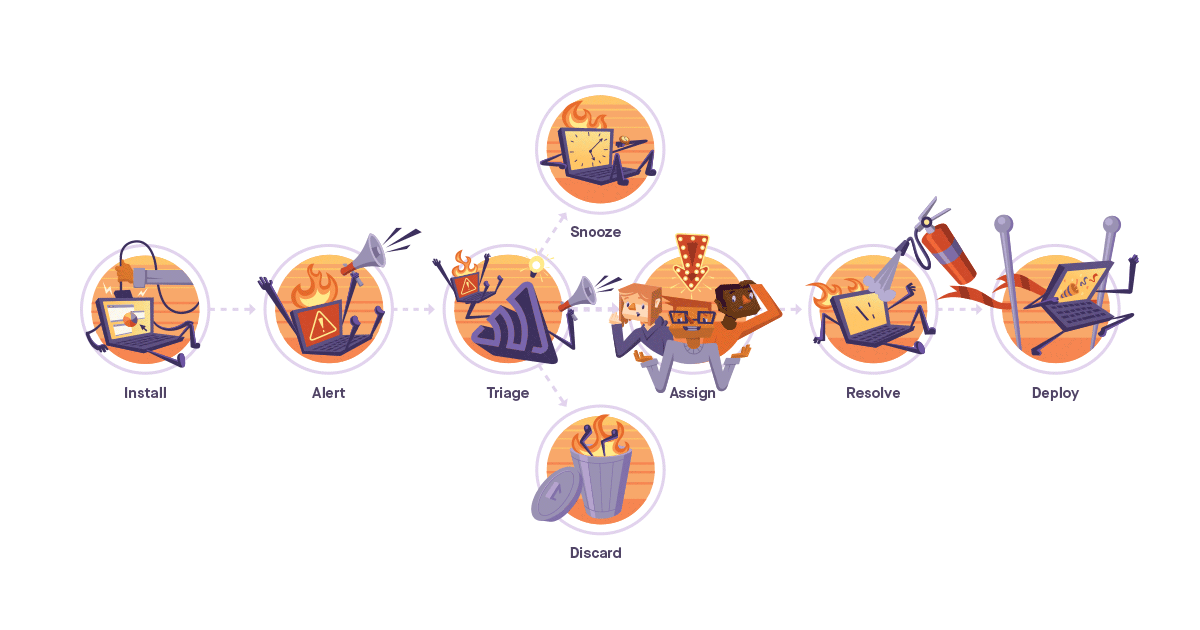Errors are inevitable (in life and in code), causing a lost trust from customers, lost revenue, and decreased team productivity. Instead of trying to eliminate them altogether, we should minimize the impact that these errors have on the software development process
Crashes increase churn by as much as 534%, representing a 6 increase from “average” churn rates1, based on research from tens of thousands of mobile apps representing hundreds of millions of application launches.
Users are up to 8 times less likely to use a product the next day after a crash2.
Acquiring a new customer is anywhere from five to twenty-five times more
expensive than retaining an existing one.Fred Brooks, engineer and author, explains that “we usually expect the number of bugs to be smaller than it turns out to be. Therefore testing is the most mis-scheduled part of programming. Coding is generally 1⁄6 of time.”4
Without careful attention to error management and code performance, developers can spend more time handling issues than they do writing new functional code. This is bad.
Thankfully, Sentry exists. Sentry is more than just error tracking.It’s how you maintain the quality of your code and work more efficiently with your team to improve user experience. Merging Sentry into your existing workflow — specifically the alert, triage, and resolution phases — provides the insight to help you work much more efficiently.
Download this PDF to learn how you can take advantage of the Sentry Workflow

